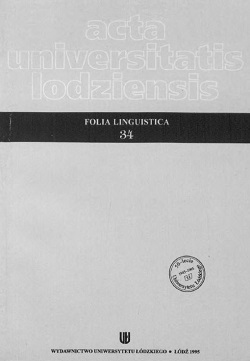Jak powstały nazwy Zaborze, Międzybłocie, Odbłonie i podobne
DOI:
https://doi.org/10.18778/0208-6077.34.09Abstrakt
The article is devoted to detailed description of the models on the basis of whih the neuter, nominative singular local names with the ending „-’e”are formed. These names are derived from prepositional expressions and originate in the process of paradigmatic (inflectional) derivation. They can be divided into two basic groups. The first group encompasses such names as Międzygórze (: góra), Zaokopie (: okop), Pozagumnie (: gumno); the second group compprises names like Międzypole (: pole), Przedbłonie (: błonie), Zamorze (: morze).
The first phase of derivation is common for the names belonging to both the groups - a prepositional expression changes into a neuter noun. In the second phase, in the first group, the derived form has a paradigm different from the noun in the syntactic expression from which it is derived. In the second group such a change does not occur, and derivation is based on the characteristic inflectional „immobilization” of the noun.
Pobrania
Pobrania
Opublikowane
Jak cytować
Numer
Dział
Licencja

Utwór dostępny jest na licencji Creative Commons Uznanie autorstwa – Użycie niekomercyjne – Bez utworów zależnych 4.0 Międzynarodowe.










